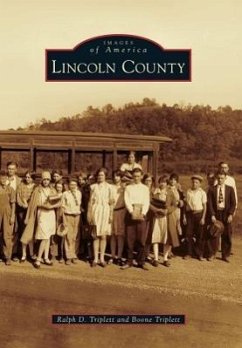Lincoln County was named for Pres. Abraham Lincoln, and the county seat, Hamlin, was likely named for his vice president, Hannibal Hamlin. Created out of Boone, Cabell, Kanawha, and Putnam Counties in 1867, Lincoln County is characterized by the geographic oddity of three north-flowing rivers: Guyandotte, Mud, and Coal. The county developed around its rivers and their tributaries, strategically using them to operate mills and transport goods. Timbering was its first major industry, and readers will see images of the log rafts and push boats that operated along these streams. Arrival of the railroad in the early 20th century opened another transportation artery. There was also a major oil boom around this time. Fossil fuels have remained important to the county's economy, particularly natural gas and coal. Lincoln County highlights what life was like in area communities such as West Hamlin, Branchland, Harts, Hamlin, Griffithsville, and Alum Creek.
Bitte wählen Sie Ihr Anliegen aus.
Rechnungen
Retourenschein anfordern
Bestellstatus
Storno

